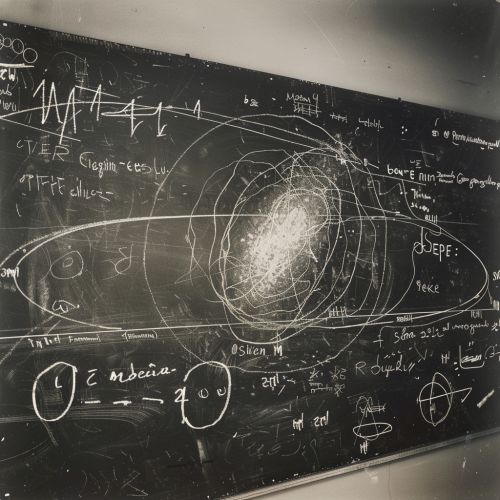Einstein Field Equations
Einstein Field Equations
The Einstein Field Equations (EFE), also known as Einstein's equations, are a set of ten interrelated differential equations in Albert Einstein's theory of General Relativity. They describe the fundamental interaction of gravitation as a result of spacetime being curved by matter and energy. The equations were first published by Einstein in 1915 as a tensor equation, which relates the geometry of spacetime to the distribution of matter within it.


Mathematical Formulation
The Einstein Field Equations can be written as:
\[ R_{\mu\nu} - \frac{1}{2} R g_{\mu\nu} + \Lambda g_{\mu\nu} = \frac{8 \pi G}{c^4} T_{\mu\nu} \]
Here, \( R_{\mu\nu} \) is the Ricci curvature tensor, \( R \) is the scalar curvature, \( g_{\mu\nu} \) is the metric tensor, \( \Lambda \) is the cosmological constant, \( G \) is the gravitational constant, \( c \) is the speed of light, and \( T_{\mu\nu} \) is the stress-energy tensor.
- Ricci Curvature Tensor
The Ricci curvature tensor \( R_{\mu\nu} \) represents the degree to which the geometry determined by a metric tensor deviates from that of flat space. It is obtained by contracting the Riemann curvature tensor.
- Scalar Curvature
The scalar curvature \( R \) is a single number that describes the curvature of spacetime at a point. It is the trace of the Ricci tensor.
- Metric Tensor
The metric tensor \( g_{\mu\nu} \) describes the geometry of spacetime. It defines the distance between nearby points in spacetime.
- Cosmological Constant
The cosmological constant \( \Lambda \) was introduced by Einstein to allow for a static universe. It represents the energy density of empty space, or the "vacuum energy."
- Stress-Energy Tensor
The stress-energy tensor \( T_{\mu\nu} \) describes the density and flux of energy and momentum in spacetime. It acts as the source of the gravitational field in the Einstein Field Equations.
Physical Interpretation
The Einstein Field Equations describe how matter and energy in the universe influence the curvature of spacetime. The left-hand side of the equation represents the geometry of spacetime, while the right-hand side represents the matter and energy content.
- Gravitational Waves
One of the predictions of the Einstein Field Equations is the existence of Gravitational Waves, which are ripples in spacetime caused by accelerating masses. These waves were first directly detected by the LIGO and Virgo collaborations in 2015.
- Black Holes
The EFE also predict the existence of Black Holes, regions of spacetime where the gravitational field is so strong that nothing, not even light, can escape. The Schwarzschild solution to the EFE describes a static, spherically symmetric black hole.
Solutions to the Einstein Field Equations
Finding exact solutions to the Einstein Field Equations is a complex task. Some well-known solutions include:
- Schwarzschild Solution
The Schwarzschild solution describes the spacetime geometry around a non-rotating, spherically symmetric mass. It is the simplest black hole solution.
- Kerr Solution
The Kerr solution generalizes the Schwarzschild solution to include rotating black holes. It describes the spacetime geometry around a rotating mass.
- Friedmann-Lemaître-Robertson-Walker (FLRW) Metric
The FLRW metric describes a homogeneous and isotropic universe. It is used in cosmology to model the large-scale structure of the universe.
Applications in Modern Physics
The Einstein Field Equations have numerous applications in modern physics, including:
- Cosmology
In cosmology, the EFE are used to model the evolution of the universe. The FLRW metric, derived from the EFE, forms the basis of the Big Bang theory.
- Astrophysics
In astrophysics, the EFE are used to study the structure and dynamics of stars, galaxies, and other celestial objects. They are essential in understanding phenomena such as Neutron Stars and black holes.
- Quantum Gravity
The EFE are also a starting point for attempts to formulate a theory of Quantum Gravity, which seeks to unify general relativity with quantum mechanics.
